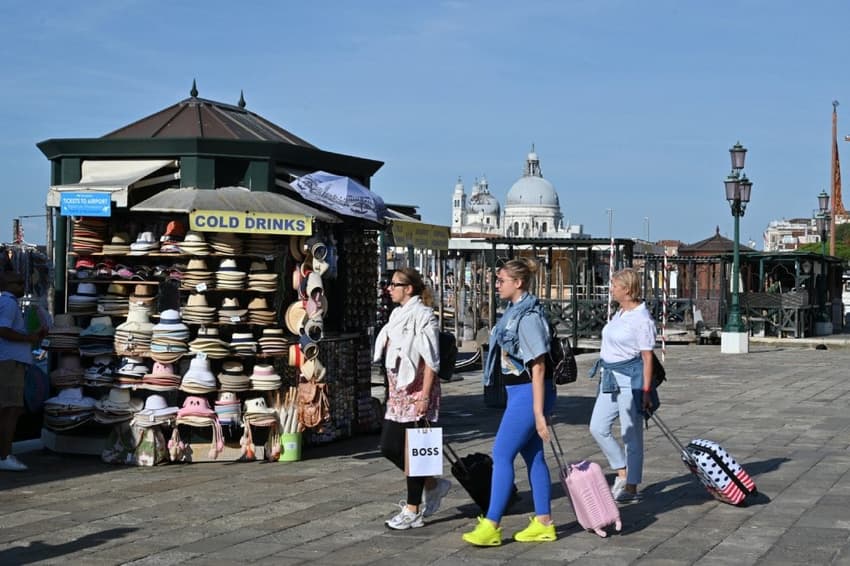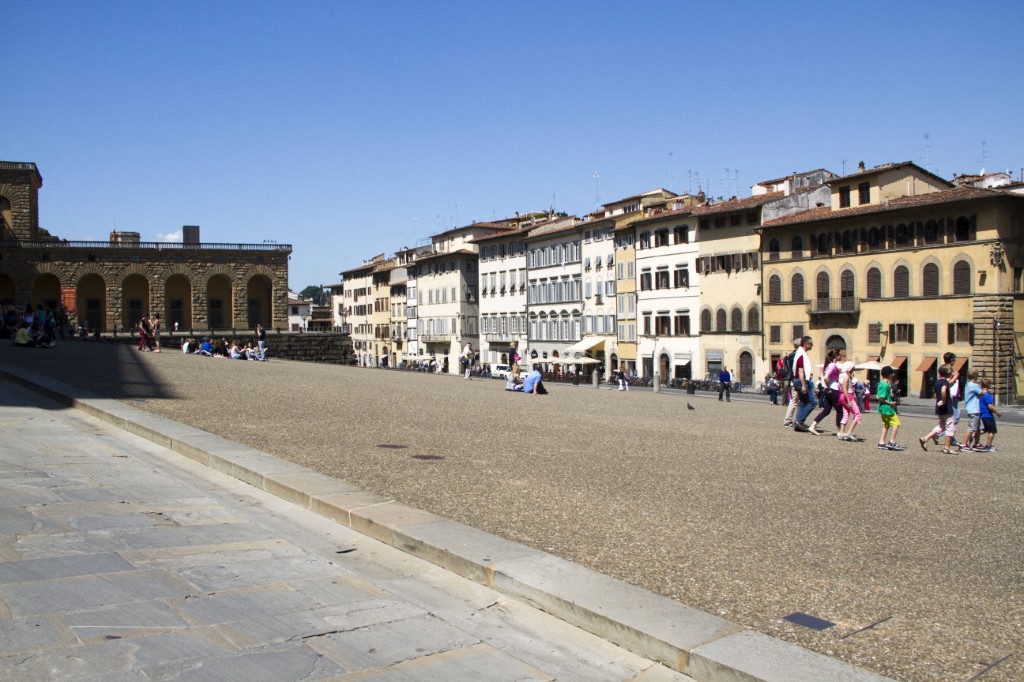What is Italy’s city tax for tourists and where do you need to pay it?

Whether you're staying in a big city, a seaside holiday spot or an Alpine resort, when visiting Italy there’s a good chance you’ll have to pay a city 'tourist tax' on top of your accommodation bill.
What is the 'tourist tax'?
Italy's 'tourist tax', also known as imposta di soggiorno, is a charge imposed by some Italian cities on visitors staying in local accommodation (hotels, B&Bs, vacation rentals, hostels, campsites, etc.).
The idea behind the charge is that visitors use services during their trip that are partly paid for by residents' taxes and the imposta di soggiorno passes on some of that cost to tourists themselves.
The collected funds are earmarked for services that benefit both tourists and locals, such as maintaining the city centre, running public transport, putting on cultural events or offering free wifi.
Where do I have to pay it?
Local authorities have the right to decide whether or not to charge the tourist tax.
In 2011, when the tax was first introduced, only 13 comuni (town councils) applied the tax, whereas well over 1,000 imposed it in 2023.
Though there’s no exhaustive list of Italian comuni currently charging the tax, most big cities, including Venice, Bologna, Florence, Rome and Milan, and tourist hotspots around the country (Gallipoli, Sorrento, Ischia, Cortina, etc.) have it in place.
READ ALSO: Seven ‘secret’ UNESCO World Heritage sites in Italy you need to visit
If you’re unsure on whether or not the city or town you’re planning on staying in charges the tourist tax, it’s advisable to look for an imposta di soggiorno item in the tributi (taxes) section of the local comune website – or alternatively run a Google search of this sort: comune di [town] + imposta di soggiorno + relevant year.

A view of Pitti square in Florence in June 2013. Photo by CLAUDIO GIOVANNINI / AFP
Who has to pay?
Anyone staying in accommodation (hotels, B&Bs, holiday homes, campsites, hostels, etc.) in a city that applies the tourist tax must pay the charge. This applies to both foreign nationals and Italian citizens, though not local residents.
Children are generally exempt, though the age limit varies from city to city – for instance, it’s 18 in Milan, 12 in Florence and 10 in Rome.
Other exemptions may include elderly guests, guests with disabilities, hospital patients and their carers, students, or tour guides.
How much is it?
The exact rates are entirely at the discretion of local authorities, which is why you can expect to be charged different amounts in different parts of Italy.
Rates generally change based on the type of accommodation, with higher tariffs in place for guests staying in luxury establishments.
For instance, this is an overview of Rome’s tourist tax rates per night:
- One-star hotels: €4
- Two-star hotels: €5
- Three-star hotels: €6
- Four-star hotels: €7,50
- Five-star hotels: €10
- B&Bs: €6
- Agriturismi (holiday farmhouses): €6
- Hostels: €3.50
- Campsites: €3
These are per guest, which means that a couple staying seven nights in a three-star hotel can expect to add €84 – (€6 x 2) x 7 – to their accommodation bill.
Most local authorities set a cap on how many nights are taxed. For example, Rome will only tax the first ten days of your stay (or five days in the case of campsites), while in Florence the limit is seven nights.

A tourist takes a picture during a visit to Rome's Colosseum in February 2021. Photo by Vincenzo PINTO / AFP
Some cities lower their tourist tax rates in the low season. For instance, the tourist charge for a four-star hotel in Venice is €4,50 per guest from February 1st to December 31st, and €3,10 from January 1st to January 31st.
Tourist tax rates and regulations can change, so it’s always best to check the comune website to get the most up-to-date information.
How do I pay the tourist tax?
Guests pay the tourist tax directly to their accommodation structure, which is responsible for declaring it and sending it to the local authorities.
If you've booked directly with your accommodation, they'll in most cases include it in your accommodation bill. If you've booked via a tour operator or third-party booking site, you may have to pay the tax separately to your host before the end of your stay.
In all cases however, the tax should be clearly marked on your bill or documented with a receipt if paid separately.
As of February 15th 2024, in some 1,200 comuni around Italy, Airbnb automatically collects the tourist tax on behalf of hosts at the time of booking.
In the remaining comuni, collection is still up to hosts, though the process should be automatised for the entire country by the end of the year.
Comments
See Also
What is the 'tourist tax'?
Italy's 'tourist tax', also known as imposta di soggiorno, is a charge imposed by some Italian cities on visitors staying in local accommodation (hotels, B&Bs, vacation rentals, hostels, campsites, etc.).
The idea behind the charge is that visitors use services during their trip that are partly paid for by residents' taxes and the imposta di soggiorno passes on some of that cost to tourists themselves.
The collected funds are earmarked for services that benefit both tourists and locals, such as maintaining the city centre, running public transport, putting on cultural events or offering free wifi.
Where do I have to pay it?
Local authorities have the right to decide whether or not to charge the tourist tax.
In 2011, when the tax was first introduced, only 13 comuni (town councils) applied the tax, whereas well over 1,000 imposed it in 2023.
Though there’s no exhaustive list of Italian comuni currently charging the tax, most big cities, including Venice, Bologna, Florence, Rome and Milan, and tourist hotspots around the country (Gallipoli, Sorrento, Ischia, Cortina, etc.) have it in place.
READ ALSO: Seven ‘secret’ UNESCO World Heritage sites in Italy you need to visit
If you’re unsure on whether or not the city or town you’re planning on staying in charges the tourist tax, it’s advisable to look for an imposta di soggiorno item in the tributi (taxes) section of the local comune website – or alternatively run a Google search of this sort: comune di [town] + imposta di soggiorno + relevant year.

Who has to pay?
Anyone staying in accommodation (hotels, B&Bs, holiday homes, campsites, hostels, etc.) in a city that applies the tourist tax must pay the charge. This applies to both foreign nationals and Italian citizens, though not local residents.
Children are generally exempt, though the age limit varies from city to city – for instance, it’s 18 in Milan, 12 in Florence and 10 in Rome.
Other exemptions may include elderly guests, guests with disabilities, hospital patients and their carers, students, or tour guides.
How much is it?
The exact rates are entirely at the discretion of local authorities, which is why you can expect to be charged different amounts in different parts of Italy.
Rates generally change based on the type of accommodation, with higher tariffs in place for guests staying in luxury establishments.
For instance, this is an overview of Rome’s tourist tax rates per night:
- One-star hotels: €4
- Two-star hotels: €5
- Three-star hotels: €6
- Four-star hotels: €7,50
- Five-star hotels: €10
- B&Bs: €6
- Agriturismi (holiday farmhouses): €6
- Hostels: €3.50
- Campsites: €3
These are per guest, which means that a couple staying seven nights in a three-star hotel can expect to add €84 – (€6 x 2) x 7 – to their accommodation bill.
Most local authorities set a cap on how many nights are taxed. For example, Rome will only tax the first ten days of your stay (or five days in the case of campsites), while in Florence the limit is seven nights.

Some cities lower their tourist tax rates in the low season. For instance, the tourist charge for a four-star hotel in Venice is €4,50 per guest from February 1st to December 31st, and €3,10 from January 1st to January 31st.
Tourist tax rates and regulations can change, so it’s always best to check the comune website to get the most up-to-date information.
How do I pay the tourist tax?
Guests pay the tourist tax directly to their accommodation structure, which is responsible for declaring it and sending it to the local authorities.
If you've booked directly with your accommodation, they'll in most cases include it in your accommodation bill. If you've booked via a tour operator or third-party booking site, you may have to pay the tax separately to your host before the end of your stay.
In all cases however, the tax should be clearly marked on your bill or documented with a receipt if paid separately.
As of February 15th 2024, in some 1,200 comuni around Italy, Airbnb automatically collects the tourist tax on behalf of hosts at the time of booking.
In the remaining comuni, collection is still up to hosts, though the process should be automatised for the entire country by the end of the year.
Join the conversation in our comments section below. Share your own views and experience and if you have a question or suggestion for our journalists then email us at [email protected].
Please keep comments civil, constructive and on topic – and make sure to read our terms of use before getting involved.
Please log in here to leave a comment.